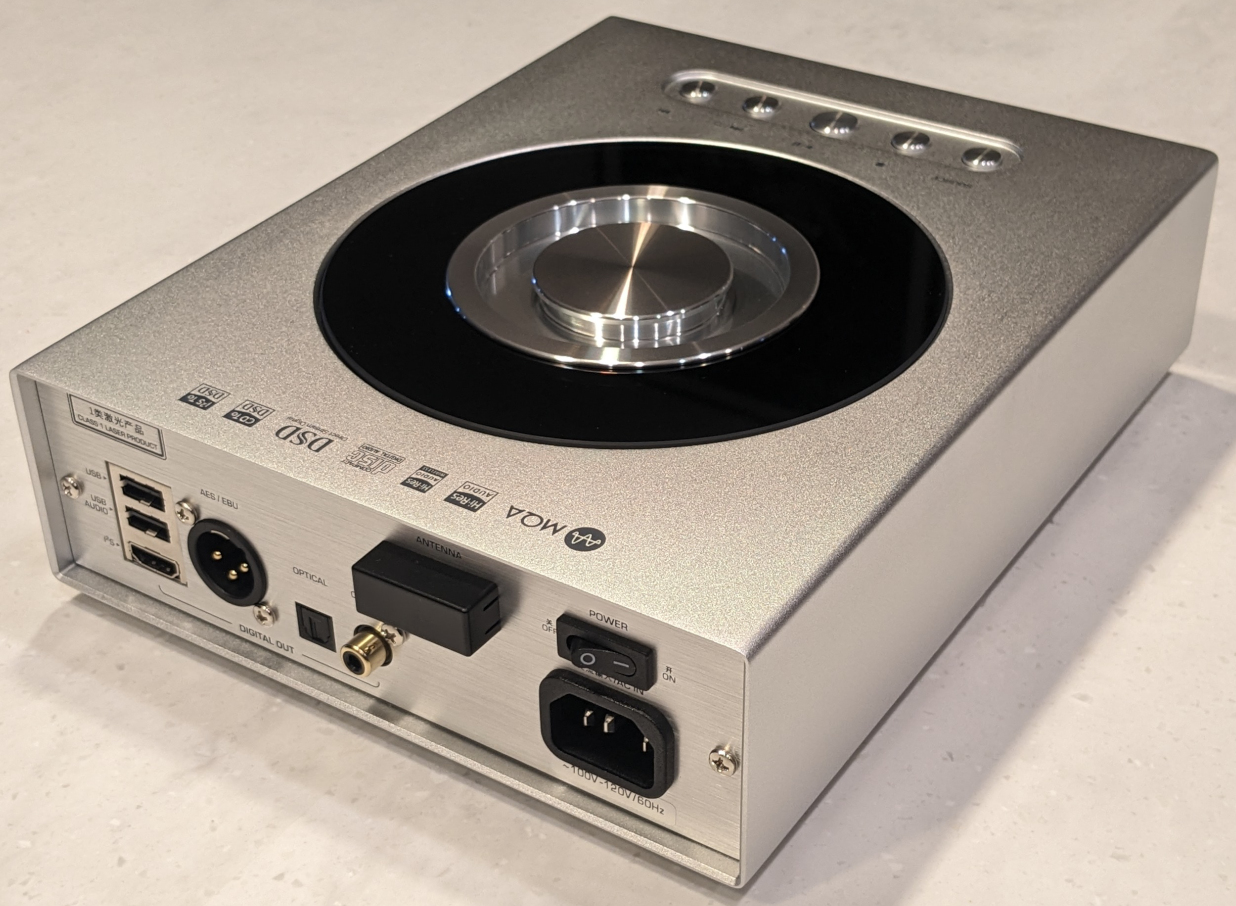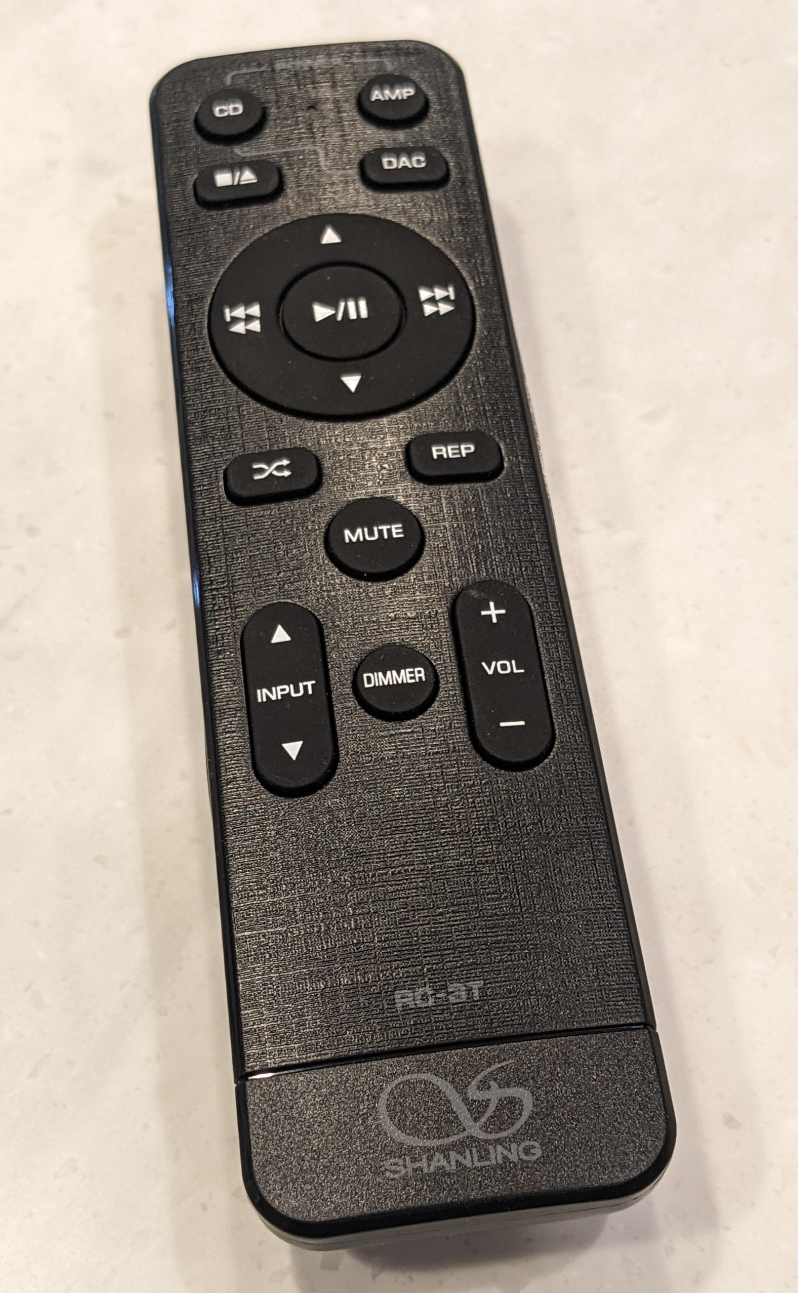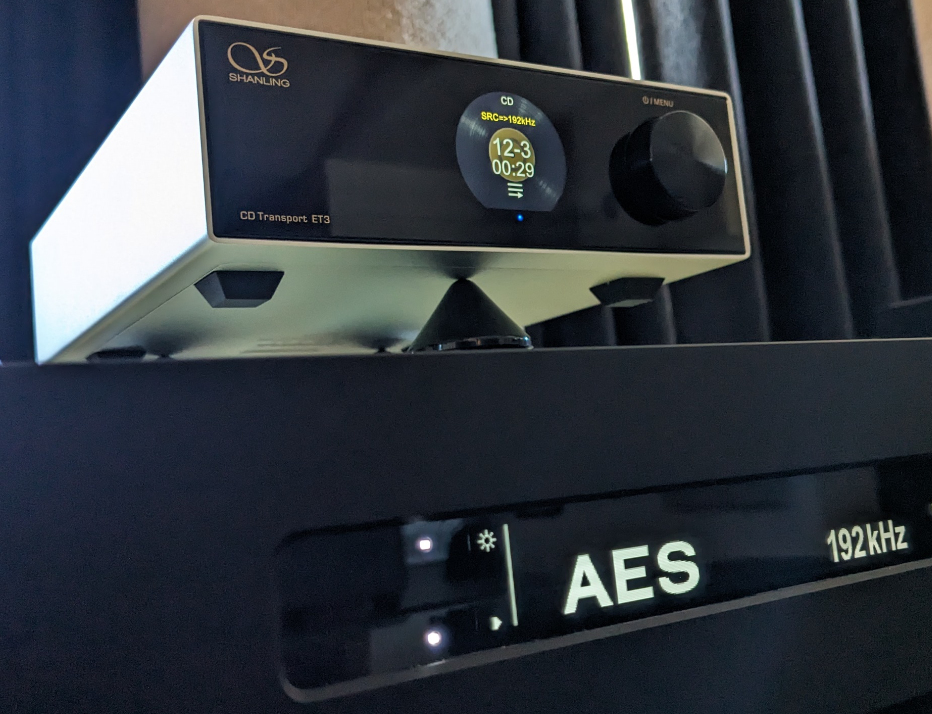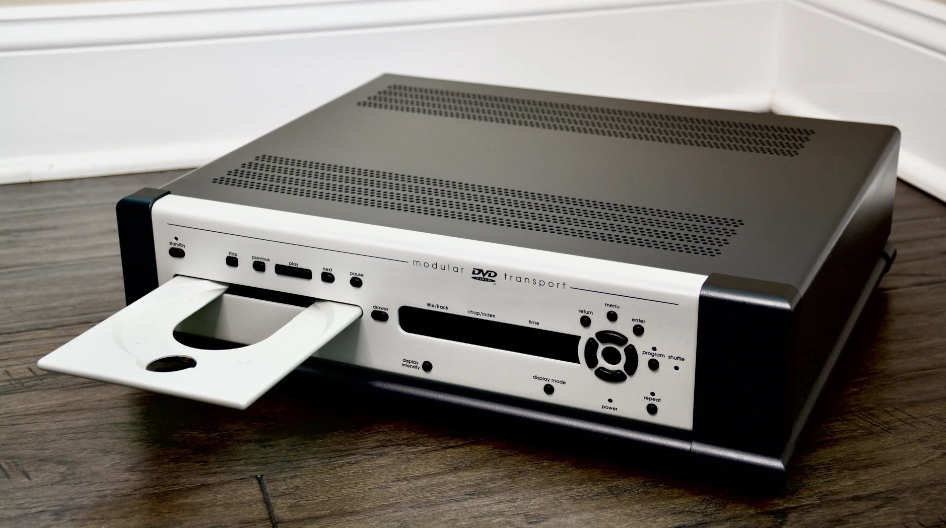by Kevin OBrien on 12/25/2023
SHANLING ET3 CD TRANSPORT REVIEW
Apparently, we put our heads down for what seems like two years, and next thing you know, compact discs are making a comeback! Seriously, we had no idea that there was even a legitimate demand for spinning shiny, little, silver discs anymore. This further reinforces the notion that when something goes 'out of style', just wait a while, and it will come back 'in style' eventually. The compact disc, first sold in 1982, is no exception.
What initially led us on this CD-journey, was the fact that Schiit Audio came out with a USB-enabled CD transport this summer. That really caught our attention, as Mike Moffat of Theta Digital fame, is one of the owners of Schiit. Our last and final CD transport at YFS was the Theta Carmen II, before it finally died in 2012. We have been waiting for Mr. Moffat to release something along the lines of the Urd for a while now, but had no idea it would be the final product it turned out to be. USB-enabled CD playback!?!? What?
Well, this review is for the Shanling ET3 CD Transport, NOT the Schiit Urd. So what gives? It turns out, the Shanling ET3 is also USB-enabled and shares that similar concept. What differentiates the ET3 from the Urd is the extra digital outputs, namely the I2S, and the ability to use the ET3 as a streamer / endpoint for digital file playback. The ET3 allows the end user to connect a USB stick to the rear of the player (or to your network via WiFi), navigate to said files via the Eddict Player app (available for download in the Google Play Store) on your phone or tablet, and play them back via the USB output in hi-res. The ET3 also has the ability (theoretically) to upscale playback from Redbook to DSD. We will get into the weeds on that later...
The ET3 also has a more robust spinning mechanism / laser pick-up compared to Schiit's offering. We would rather not see a tray popping in and out of the unit if possible. The Schiit CD transport did not check that box. The ET3 has a much preferred solution for the spinning portion of the player, along with the ability to significantly reduce vibrations from reaching the laser / disc spinning assembly. Specifically, the Shanling unit implements the Philips SAA7824 solution mated with the Sanyo HD850 laser. Schiit is using the StreamUnlimited tray solution, which seems like a good way to go, but the top-loader option is always better at the end of the day for longevity and vibration mitigation reasons.
As far as this review is concerned, we will only be focusing on the CD playback of the ET3 and the options associated with Redbook 0s and 1s. We did not hook up the ET3 to WiFi, nor did we insert a file-loaded USB stick, nor did we use the I2S output. We want to be perfectly clear, as we are not interested in playing digital files (hi-res or otherwise) with our CD transport. We have several computer transports laying around to send Qobuz streams and MQA / DSD files to. Not to mention, we do not have a DAC in-house that accepts an I2S input (such as PS Audio's DAC offerings). We are only interested in what the Shanling has to offer in regards to sending Redbook (16 bit, 44.1 kHz) digital streams to our DAC, whether it be via the AES / EBU or the USB output, the latter being the optimized digital output per Shanling. We did not test the Optical digital output nor the Coaxial digital output but we did notice the USB output could wring out slightly more detail than the AES / EBU output. It appears Shanling was spot-on in their assessment. However, the AES / EBU has the least amount of jitter associated with it, so we stuck with that, when not using the USB output.
The ET3 has the ability to upsample the AES / EBU, Coaxial, and Optical digital outputs to DSD along with several other hi-res sample rates. The USB output is independent of the other traditional digital outputs (we are assuming the I2S is independent as well). The user should disconnect all digital outputs except for the one he or she is currently using for the best possible results. This is per the manufacturer.
Functionality of the ET3 was what we expected, and did not leave us wanting (except when it came to upsampling, explained later on in the review). It did take us a while to figure out how to turn the player on after we placed it in our rack. The knob located on the front panel must be pressed in for 2 to 3 seconds to take the transport out of standby mode. Push in for another 2 to 3 seconds and the unit will go back into standby mode. (One must place the rocker switch on the rear panel in the "on" position first, obviously). Press in the knob on the front panel quickly and the 'Settings Menu' is at your fingertips. Rotate the knob back and forth to select the menu items that are desired, push in the knob to select the menu item, and then use the 'Track Backwards' button on top of the unit to exit out of the menu (the remote will not work for this). Simple enough.
That brings us to another quick point: the display on the front panel is sufficiently bright and has enough resolution to make out what's happening, but it is not large enough for viewing from long distances. This is OK with us, but may not work for some listeners. The menu items are large enough to read up-close, so this is just a small nitpick. Overall, the display was a nice change from the standard 'giant numbers' we are used to seeing on most players. This will be a personal preference thing though...
The remote control is a little lacking, but was good enough to get the job done. We only used it for tracking backwards, forwards, and pausing / stopping the player. Corners have to be cut somewhere when offering a product like the ET3 at such an affordable price point (~$750 USD). We feel it was the right area to skimp on.
As far as sound quality and overall presentation, this is where things got really interesting. To be perfectly honest, the ET3 blew us away on first listen! We didn't even give the unit enough time to come up to room temperature. It was cold, right off the UPS truck, and still sounded incredible. Keep in mind, we are talking about CD playback. Sound quality is all relative to what you are comparing it to. If you want the best sounding CD playback for the least amount of cash, we feel the Shanling ET3 delivers. We cannot recall hearing a better presentation of Redbook material than with the ET3, with only one exception, a long-discontinued Proceed PDMT unit. Unfortunately, trying to find old CD transports is essentially pointless, as they all need unavailable repairs at this point. Regardless, this is extremely high praise for the ET3 for sure.
When we look at the specs of the ET3, we get excited. Unfortunately, we were not able to get any of the upsampling features of the ET3 to work with our Meitner MA3 DAC. With the exception of the 24/192 from the AES / EBU output, none of the other formats would come through on the MA3 screen. Frustrated, we contacted Shanling customer support, and they informed us that it should indeed work. Well, theory and reality are two entirely different things. No matter what we tried, we could not get the AES / EBU output to upsample to DSD or any other format above 24/192.
When comparing the 24/192 upsampled presentation versus the standard Redbook presentation, we could not distinguish much, if any, of a difference. This lead us to leaving the player in 'Bypass Mode' under the 'SRC Menu' for the rest of our review. Your mileage may vary, but we stopped worrying about upsampling and just enjoyed the Redbook bliss we were hearing.
When we talk about a piece of gear's 'sonic signature', what are we really talking about? This is the sound quality and tonal character of the gear, showing the listener 'how it sounds' when playing back various source material. We like to use words like, "Liquid, Smooth, & Analog" to describe what we prefer to hear at YFS. The Shanling ET3 lends itself to a slightly 'warm' presentation compared to completely neutral gear and hit on all those descriptors listed above. We love detailed, yet relaxed listening events. The ET3 gave us exactly what we were hoping for, but at stupid-cheap pricing!
When you spend a lot of time listening to high-end gear, you begin to realize what jitter sounds like in your system. One way to quickly sum up the ET3 would be in terms of jitter: it's almost non-existent. We could listen to the ET3 for hours on end with zero listening fatigue or straining. We also fell asleep a few times during long listening sessions, the ultimate test of our YFS review system. The ET3 sounds as 'analog' as you are going to get from a CD in our experience (when combined with a capable DAC).
A particular Proceed PDMT comes to mind, as mentioned earlier, when we reminisce about the pinnacle of CD transports that we have experienced over the years. Proceed was manufactured by Madrigal Audio Labs, manufacturers of Mark Levinson, Revel, etc. The Proceed PDMT was the most amazing sounding CD transport that we have had the pleasure of listening to. Somehow, it only retailed for $5,995 USD, but punched way above its class. It could compete with the Mark Levinson units, costing 3 to 5 times more. Unfortunately, it is no longer supported over 20 years later.
The ET3 gets us as close to the Proceed as possible, most likely on par with it, and possibly besting it, without searching far and wide for an uber-expensive, mega-buck CD transport. We are confident these reference-grade CD transports must be made somewhere in the world, but we just don't want to spend the time and money to figure it out... And with the ET3, we don't need to. There's no need to spend big bucks to play back your CD collection in total audiophile style these days.
The Shanling ET3 passed our YFS listening test with flying colors.
And yes, we will be keeping the ET3 in-house for our next YFS CD Redbook listening event.
Thank you for spending your time with us...
- KOB









